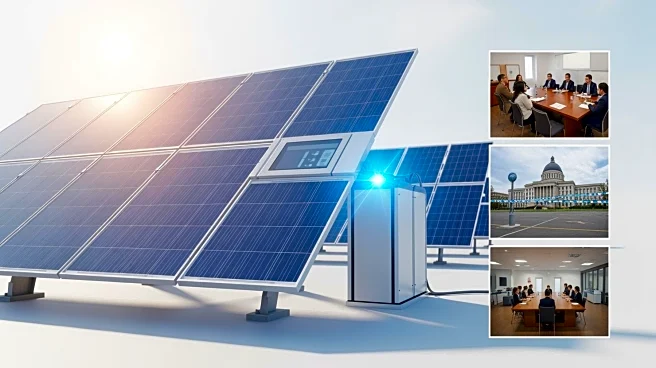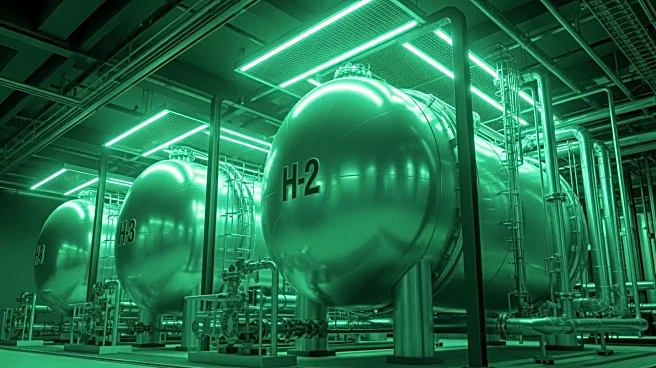What's Happening?
Researchers from the Lawrence Berkeley National Laboratory and the University of California, Berkeley, have developed a new refrigeration method called ionocaloric cooling. This innovative approach leverages
the ionocaloric cycle, which uses ions to change a fluid's phase and absorb heat, potentially offering a more environmentally friendly alternative to traditional refrigerants. The method involves using a salt made with iodine and sodium to melt ethylene carbonate, a common organic solvent. This process could achieve a global warming potential (GWP) of zero or even negative, as it utilizes carbon dioxide as an input. The researchers demonstrated a temperature shift of 25 degrees Celsius with less than a single volt of charge, surpassing the efficiency of existing caloric technologies.
Why It's Important?
The development of ionocaloric cooling is significant as it addresses the environmental concerns associated with traditional refrigerants, which often have high GWP. The new method could help reduce reliance on hydrofluorocarbons (HFCs), which countries have committed to phasing out under the Kigali Amendment. By offering a safer and more efficient alternative, ionocaloric cooling could play a crucial role in meeting global environmental goals. Additionally, the technology's potential to be GWP negative could contribute to reversing climate change impacts, benefiting both the environment and industries reliant on refrigeration.
What's Next?
The next steps for the researchers involve transitioning the ionocaloric cooling technology from the laboratory to practical, commercial systems. This includes experimenting with different salts and techniques to optimize the system's efficiency and scalability. The researchers aim to develop systems that can be used for both heating and cooling, expanding the technology's applications. As the technology progresses, it could significantly impact industries such as food preservation, air conditioning, and industrial cooling, potentially leading to widespread adoption and further environmental benefits.
Beyond the Headlines
The ionocaloric cooling method represents a convergence of various scientific fields, combining elements of thermodynamics, materials science, and environmental engineering. This interdisciplinary approach highlights the potential for innovative solutions to address complex global challenges. The successful implementation of this technology could inspire further research into sustainable alternatives across different sectors, promoting a shift towards more environmentally conscious practices.











